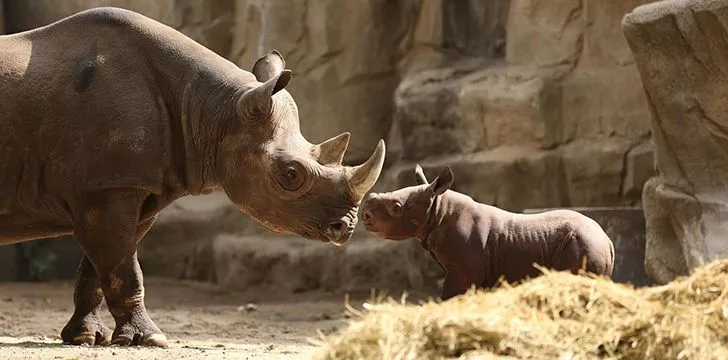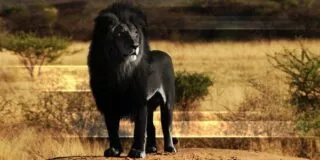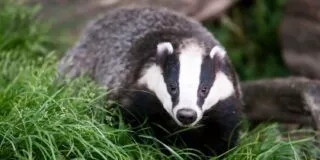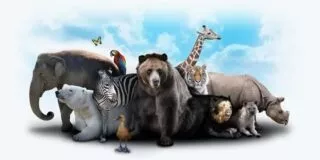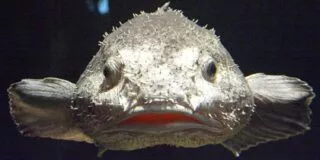The word rhinoceros means “horned nose” and they once roamed and made their homes in North America and Europe.
Now rhinos can only be found in Asia and Africa. The first rhinoceros to roam the planet was the Woolly Rhino that lived on earth over 50 million years ago!
Today, there are five different kinds of Rhino. These are the Black rhinoceros and the white rhinoceros, both of which live in Africa. While the greater one-horned or Indian rhinoceros, Javan rhinoceros, and Sumatran rhinoceros all live in Asia.
Here are 20 interesting facts about rhinos – one of nature’s oldest animals.
Rhinos come in variety of shapes and sizes.
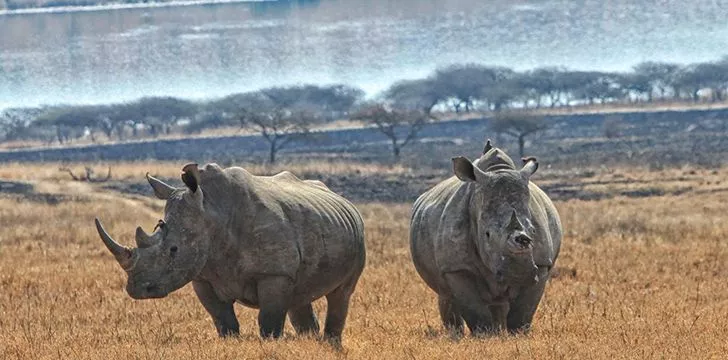
The average height for rhinos is around 6 ft. (1.8 meters) about the same for man.
Standing slightly taller than a mailbox along the side of a road, the shortest rhino is the Sumatran rhino, which stands at 4’3” (1.3 meters).
The heaviest rhino is the Indian/greater-one-horned rhino. Weighing in at an incredible 5,000 -7,100 lbs (2,500 – 3,200 kg).
The rhino weighs more than an SUV (sports utility vehicle)!
The “skinniest” is the again the Sumatran weighing in at a 1,500 lbs (700 kg).
Both humans and rhinos have keratin in their bodies.
White Rhinos usually have the longest horns. The longest known horn on record was 5 1/2 feet (1.7 meters) long!
The Black, White, and Sumatran Rhinos have two horns. White Indian and Javan have only one. Some Javan Rhino females have no horn at all!
The horn or horns of a rhino is/are not bone and is not attached to the Rhino’s skull. It is made from keratin. It’s the same thing that our fingernails are made from.
Unlike elephant tusks (which are made out of ivory) rhino horns are solid and not hollow and continue to grow throughout the rhino’s lifetime.
If a rhino survives a poacher’s attack on its horn, a new one will grow back.
Black rhinos are gray, white rhinos aren’t really white, and Sumatran rhinos are reddish-brown.
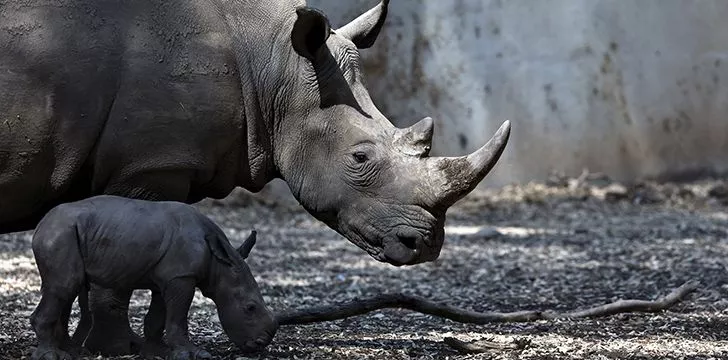
Despite its name, the white rhino is the same color as the black rhino.
While there’s no real explanation to the origin of its name, white rhino is thought to be either the Afrikaans word wyd or the Dutch word(s) wijd/whyde, or weit which all mean “wide.”
The chubbiest rhino is also called a unicorn and is built like a knight in shining armor.
I’m sure you’ve seen this slogan on many t-shirts and other promotional items to help save the rhino – Save The Chubby Unicorn!
In fact, the nickname of the greater one-horned or Indian rhino is the unicorn rhino.
Okay, maybe the greater one-horned/Indian and Javan rhinos aren’t really knights in shining armor, but both could be rhinos in shining armor. Their skin looks like plated armor.
Rhino moms are very protective of their babies.
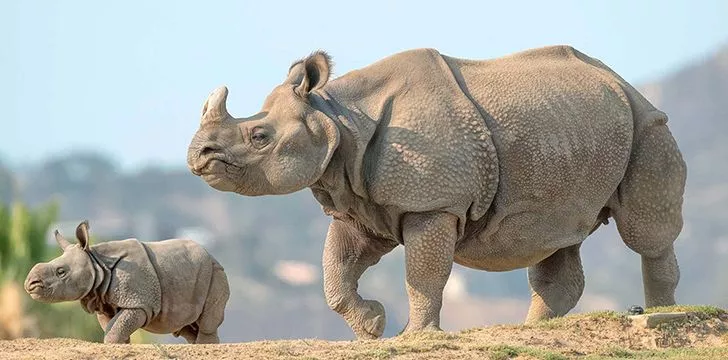
A rhino Mom is pregnant for around 15 to 16 months and is very nurturing and caring. Like most mothers, they are also very protective of their calves.
Rhino calves stay with their mother and don’t leave home until they are about 3 years old.
There are two major differences between white rhinos and a black rhinos.
White rhinos have flat, wide, and broad mouth with square lips. They are called “grazers” since they eat grass from the ground.
Black rhinos are called “browsers” because they have beak shaped lips that they use to grasp leaves and twigs from trees when eating.
Poachers hunt rhinos for their horns.
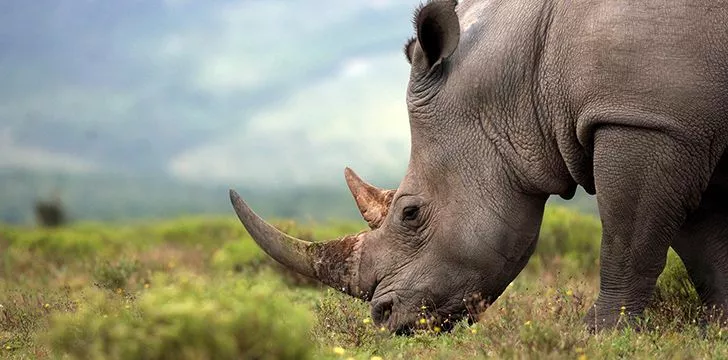
The only enemy rhinos have is man. Poachers hunt and kill rhinos for their horns and sell them on the black market for a lot of money—sometimes for even more than the price of gold!
Powered rhino horn is than used in medicine and is wrongly believed by many people in Asia to help sick people get well.
Believe it or not, rhinos, horses and zebras are alike.
The closest living rhino “relatives” are horses and zebras.
All three belong to a group of mammals called odd-toed ungulates.
The white rhino is “big headed.”
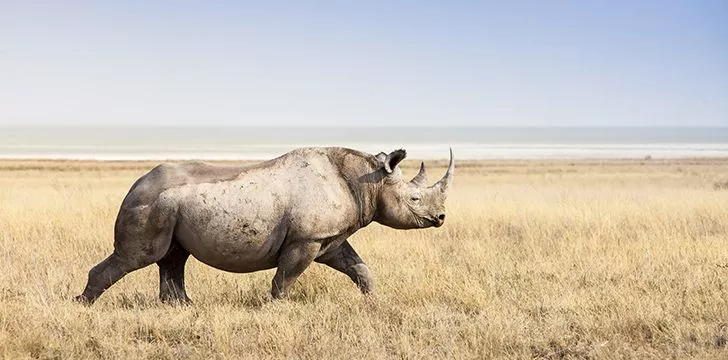
Despite having very small brains, a white rhino’s head can weigh over 2,000 lbs (907 kg).
Rhinos can’t see anything until its almost right in front of them.
Rhinos have very poor eyesight and are near-sighted (which means they can’t see you unless you are very close).
They struggle to see someone (like a poacher) or something (like a jeep) until its almost right in front of them, so when the rhino sees the person or object, it’ll usually charge for it to defend themselves.
Despite their huge size, rhinos can run or charge very fast.
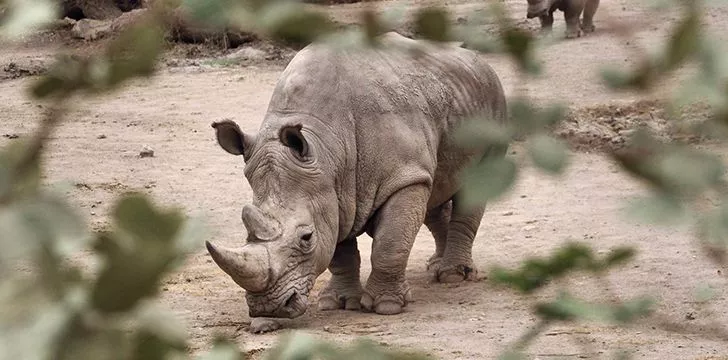
Despite their huge size and weight, rhinos can run or charge up to 30 – 40 mph (48 – 64 km/h).
The fastest human can run about 15 miles per hour. So if a rhino ever charges at you, head for the nearest tree and climb it since you can’t out run it!
Like humans, a rhino’s skin can be very sensitive and can burn.
Rhinos have thick skin. Even though it’s thick, it is quite sensitive to sunburns and insect bites.
This is why rhinos like to wallow (roll around in the mud). When the mud dries it protects the rhino’s skin (like sun block and insect spray) from the sun and insects bites.
Rhinos and oxpeckers have what scientists call a symbiotic relationship.
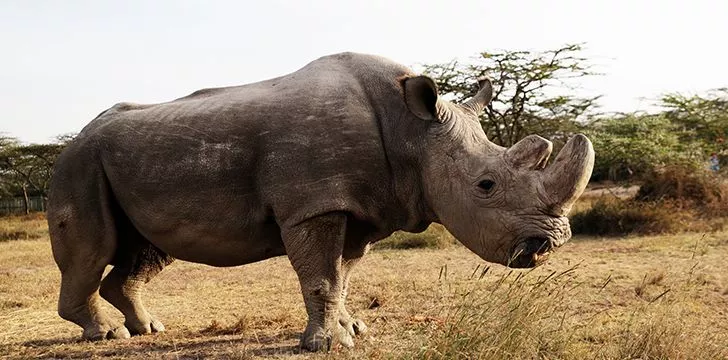
A symbiotic relationship is basically a give-and-take relationship. So you could say that the best friend of the rhino is a bird called the oxpecker.
Oxpeckers eat ticks and other insects that it finds on the rhino’s back. With its “bird’s eye view” (sorry, no pun intended) it can alert the Rhino when it senses danger by creating a commotion.
Besides giving the oxpecker a free ride on its back, sitting on the rhino’s back helps the oxpecker find its food much easier by being up higher off the ground.
A group of rhinos is called a crash.
A male rhinoceros is called a bull, a female a cow, and the young a calf.
Rhinos are herbivores.
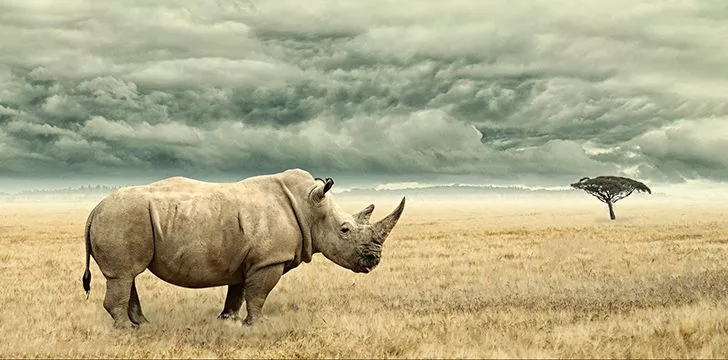
Rhinos are herbivores, which means they don’t eat meat. Their diet mainly consists of plants and fruit.
So if you went to dinner with a rhino, they would only order at the salad bar!
Rhinos can’t jump but they do like fire.
Rhinos, elephants, and pronghorn sheep are the only three mammals that can’t jump!
Rhinos are the only animals not afraid of fire. Instead of running away, they charge towards it!
World Rhino Day is celebrated on September 22.
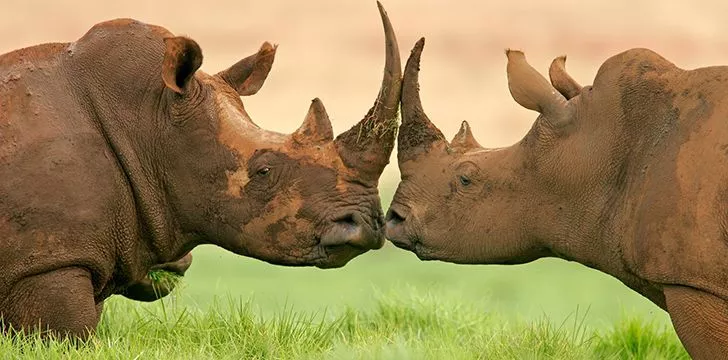
Started in 2010 by World Wildlife Fund to help raise awareness of the plight of the rhinos, World Rhino Day is an international observance that is celebrated on September 22nd every year.
Rhinos need the same amount of sleep as human adults.
Rhinos, on average, need about eight hours of sleep per day. They can sleep whether they are standing up or lying down.
When they fall into a deep sleep, they can be found lying down with their feet curled up slightly to one side.
Rhinos can identify one another by their smell.
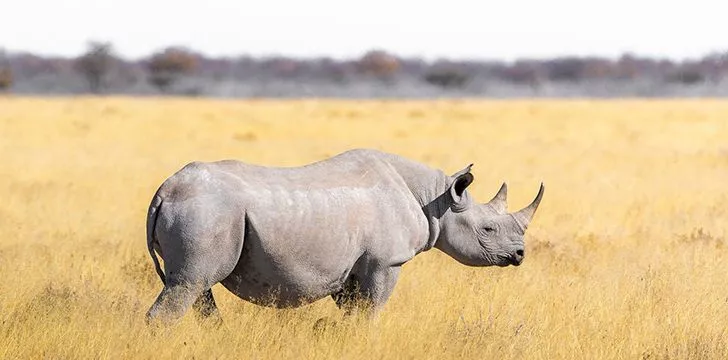
While rhinos may have very poor eyesight, their sense of smell is superior.
In fact, rhinos identify one another by their smell since each rhino’s smell is unique.
Rhinos may soon become extinct.
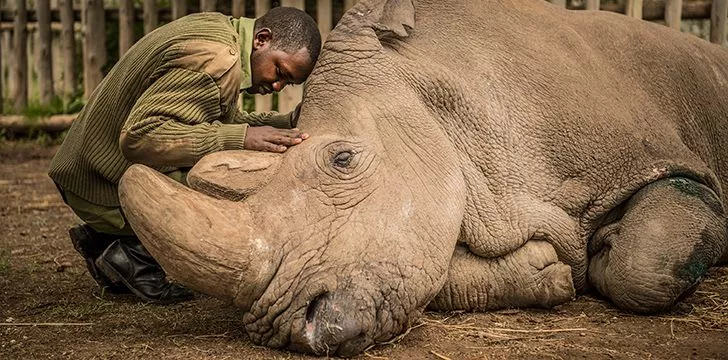
The World Wildlife Fund and the ICUN Red List the rhinos status as:
Black Rhino: critically endangered
Greater one-horned/Indian Rhino: vulnerable
Javan Rhino: critically endangered
Sumatran Rhino: critically endangered
White Rhino: near threatened
The Javan Rhino and Sumatran Rhino are considered some of the world’s rarest land mammals.
Hardly ever seen in the wild, the numbers for these rhinos are mere guesses. Some even think the Javan is extinct since none have been spotted for some time. Additionally, none live in zoos like the other types of Rhinos.
The Black Rhinos, Javan Rhinos and Sumatran Rhinos are all in danger of becoming extinct.
More to the point, they have a 50% chance of becoming extinct in three generations.
Time is running out for these near-sighted, grumpy, herbivores. In Africa, a rhino is maimed or killed every 11 hours for its horn!
Demand for crushed rhino horn for use in traditional medicines in Asia and Vietnam continue to soar.
Despite evidence proving that the horn provides no medical cures, rhinos continue to be mercilessly slaughtered and brutally butchered.
“You can always build another Taj Mahal,” artist and conservationist David Shepherd once said, “but you can never build another rhino.”
